Disinfecting the well: fighting the plague
Do-it-yourself disinfection must be done regularly, as contamination of drinking water with pathogens can cause serious health problems in people who consume this water. Of course, modern filters have bactericidal properties, but, nevertheless, it is better to keep the water clean.
It should also be noted that the technology of cleaning the well is quite simple, so that you can do it yourself, with minimal time and cost.
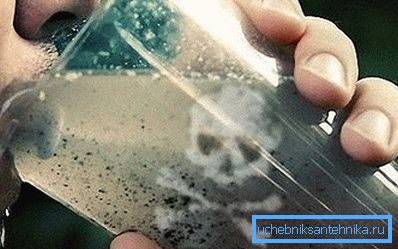
Why disinfection is needed
Well water, in contrast to water from open sources, has a low content of various organic substances. And yet, during the operation of a well, branches, leaves, small animals, etc. may fall into it. All this organic matter becomes an excellent substrate for the development of microflora, including the disease-causing one.
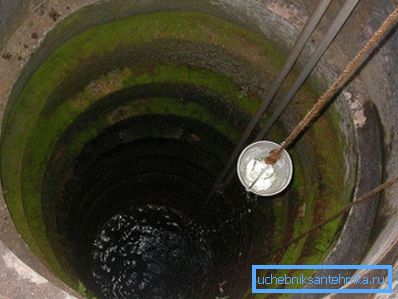
Another source of microorganisms are colonies of bacteria, algae and fungi, which settle on the walls. In a humid and relatively warm environment (and the temperature there almost never drops below zero), bacteria develop very actively, and gradually their number in water reaches critical values.
Note! If there is no water change, i.e. rarely use the well, the rate of bacterial infection increases by an order of magnitude.
As for the soil microflora, it can enter the well shaft only if the casing leakage is broken. At the same time, spores of pathogenic microorganisms are washed out together with the ground masses.
Naturally, systematic disinfection of wells is necessary to remove organic substances, as well as the bacteria that grow on them.
Disinfection technology
Preparation for events
Before disinfecting the well, it is necessary to pre-clean it. This should be done in order to prolong the effect of chemicals that kill microbes. In the course of cleaning, we will remove almost all organic matter, and for microorganisms there will simply be no nutrient substrate left (learn here how to trim the well with your own hands).
The cleaning instructions are as follows:
- First, pump out the water, lowering its level to a minimum. Best of all, if a layer of no more than 10 cm remains on the bottom.
- Then we descend into the well itself and clean the walls of algae, fungus stains and bacterial plaque with a scraper, trowel or a stiff brush.
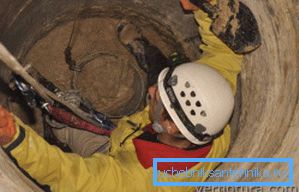
Tip! Before descending, be sure to wear a safety belt, rubber boots and a helmet. It is also worth checking gas pollution at the bottom of the mine to avoid poisoning.
- We carry out cleaning, gradually going down to the bottom.
- At the bottom we set the bucket and collect the silt into it, and all the organic matter that we cleaned off the walls.
- If at the bottom we have gravel laid - we collect the upper layer and remove it for washing and disinfection.
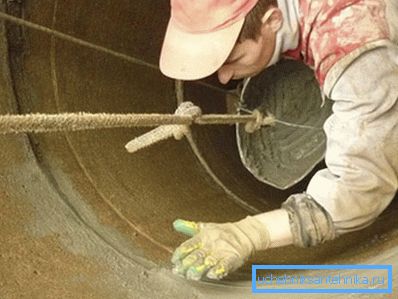
- After completion of cleaning, we monitor the condition of the joints between the rings, which form the walls of the well.
- All found cracks and cracks are covered with sealant.
Note! It is better to use fast-setting stamps, because you should not leave a well without water for several weeks!
After that we rise to the surface and prepare chemical reagents. How to disinfect a well with chlorine or potassium permanganate, we will tell in the next section.
Use of chemicals
Mechanical cleaning, which we talked about above, allows you to get rid of organic matter, but the bacteria themselves do not kill. Only chemistry can cope with this task (see also the article Cleaning your Well with Your Hands: Step-by-Step Instructions).

Disinfection of well water is most often carried out either with the use of bleach, or using potassium permanganate. The first method is preferable, since potassium permanganate in the right amount is quite difficult to get today, and its price is higher. On the other hand, permanganate is less toxic to humans, therefore, for express treatment, it will be better than bleach.
And still we will stop on the most widespread scheme.
Most often lime is used as follows:
- Before starting work on mechanical cleaning, we perform a preliminary disinfection. To do this, we pour 10 g of active chlorine per liter of water into water (it is easy to calculate the volume in advance, knowing the magnitude of the water level and the diameter of the well).
- Next, shake the water with a bucket or pump, and let stand for about two hours.
- Then we perform pumping and mechanical cleaning. In this case, the use of respiratory protection is mandatory, since chlorine fumes are quite toxic.
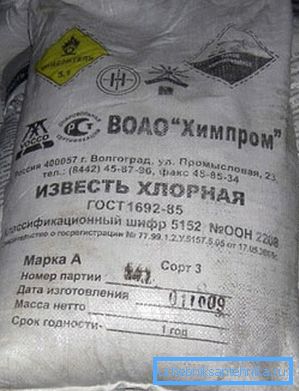
After completion of the repair of the joints, final processing is carried out:
- We prepare a coating solution: dissolve 15 grams of bleach in a liter of water.
- Using a brush or spray (you can use the old spray gun or garden sprayer) apply the composition on the inner surface of the well shaft.
- The sediment, which is sure to remain in the bucket, is drained to the bottom, after which we shake up the accumulated water and close the lid.
- We repeat the procedure in a day. Before it starts, we must always ventilate the well, otherwise poisoning is practically guaranteed to us.
- Again, close the lid on the day.
- The next day, perform a full pumping. From the hose we wash the walls, removing the remnants of lime, and then again pump the water down to the bottom.
Tip! The procedure of pumping out should be repeated several times - until the smell of the choir completely disappears.
After that you can use the well. The only recommendation is to boil the water for two weeks after processing.
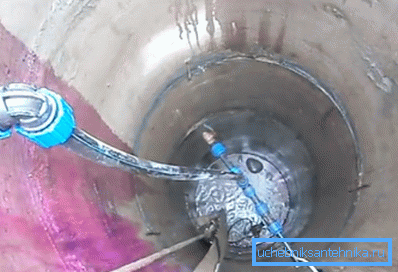
As for potassium permanganate, a hundred processing scheme will be about the same. And although the active substance will need more, but you can drink the water literally the next day.
Disinfection of water in the well can also be carried out using special UV lamps. These devices are mounted in the immediate vicinity of the water mirror and are used as an effective prevention. In the presence of UV treatment to disinfect water in full will have much less.

Conclusion
Disinfection of the well with potassium permanganate and chlorine minimizes the content of pathogens. And if we still use an effective filter, then our well water will not be inferior to bottled water in quality. In more detail the process of bactericidal treatment is shown in the video in this article.